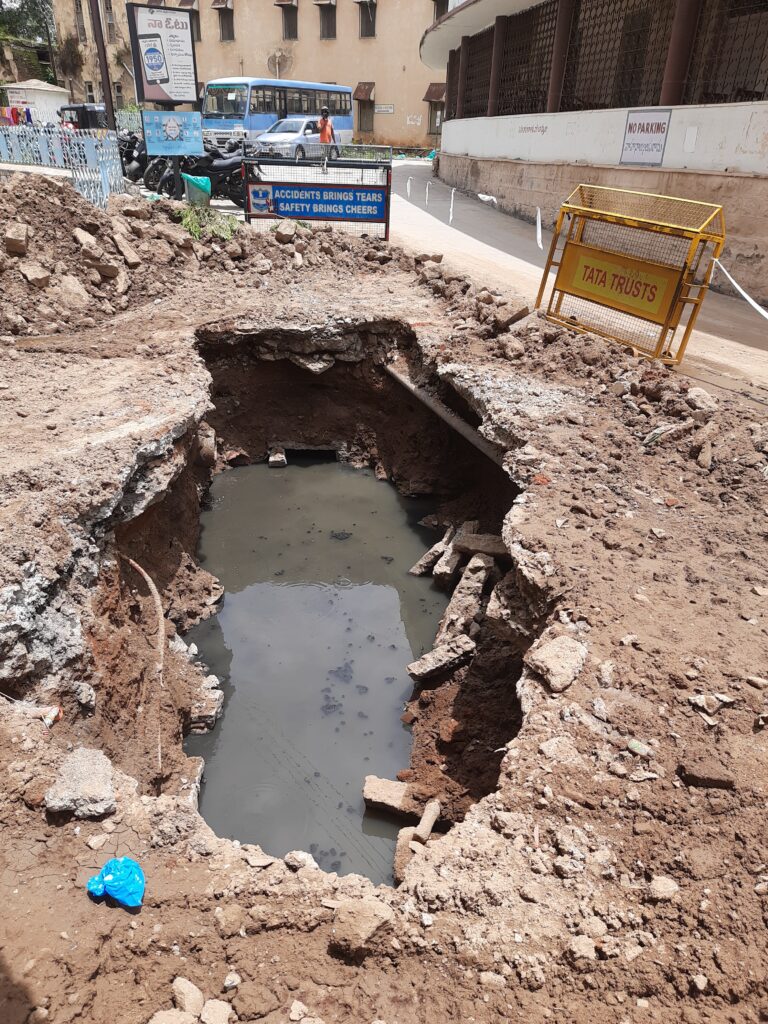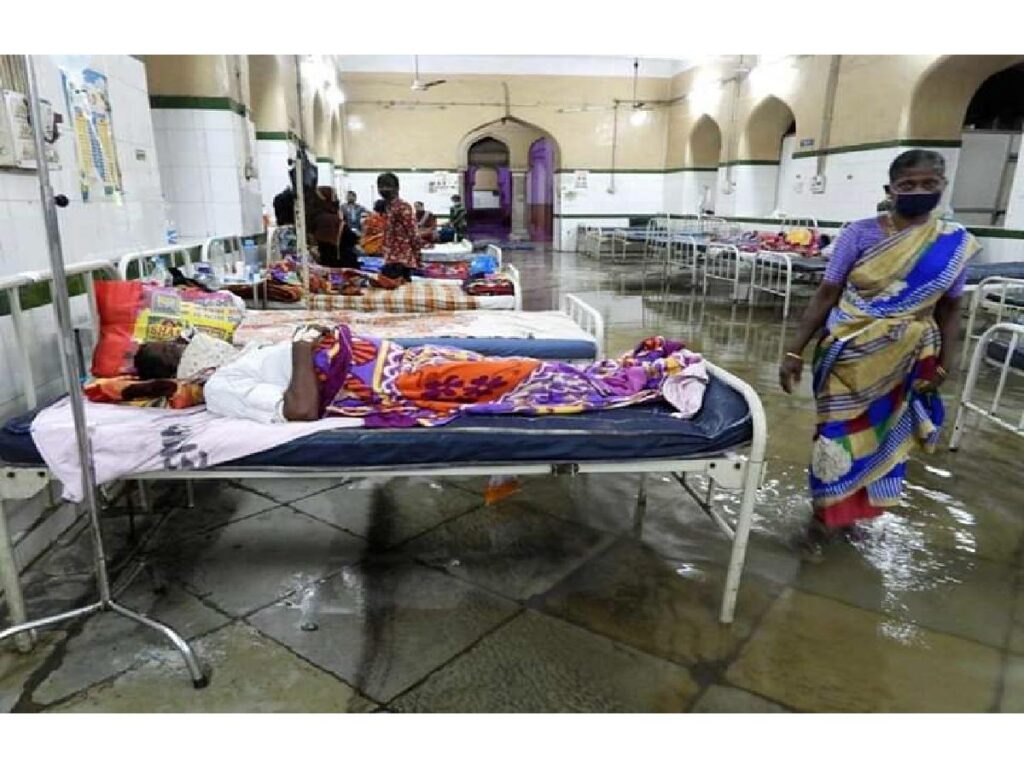Yunus Y. Lasania
Hyderabad: The Joint Action Committee (JAC) of medical students at Osmania General Hospital (OGH) has given a call for protests to be held due to the severe infrastructure crunch the healthcare facility is facing, and in light of last week’s water-logging inside the old building’s emergency ward on the ground floor. The protesting students are also demanding for a medical facility to be built inside the premises.
The JAC will mostly hold protests from 9:30 am to 10:30 am daily, and may further escalate matters by boycotting services if “deemed necessary”, said doctors. On Monday, most of the wards inside the main building had been emptied, as majority of the patients were shifted to another building.
“There was a message on our group about the protest. On the first floor of the old building, only one or two wards are operational. Covid-19 cases are increasing day-by-day and attendants of patients also cause trouble, with demands. We are asking the administration for better infrastructure, because we never know what will fall on our heads,” lamented a post-graduate student from Osmania Medical College (OMC), who is working at OGH, and did not want to be named.
The hospital was once again in the news last week after its wards were flooded with water during heavy rainfall. Doctors and other staff members at OGH attributed it to the internal road work that had taken place earlier. Concerned authorities had said that the flooding was a result of a nala that passes via the hospital (underground), getting blocked.


However, that is right now least of the concerns, as doctors at OGH are worried about the increasing number of suspected coronavirus (COVID-19) patients who are coming to the hospital every day. Anyone who has a fever, cough, cold etc will be kept in the isolation ward, where they will remain till their test results are back.”
If someone tests positive then they will be sent to Gandhi Hospital, but space isn’t enough in the isolation ward, which has a capacity of about 100 people,” said another doctor, who requested anonymity. Adding to all this is the fact that the superintendent of OGH, Dr. Nagender, himself is missing as he has also tested positive for COVID-19 and is currently undergoing treatment.
Doctors and medical interns working at OGH said that the major issue is lack of infrastructure, which is not being addressed by the authorities. Last week, doctors at OGH also told this reporter that COVID-19 deaths at OGH are being underreported as many of those who are admitted at the isolation wards pass away even before their tests are back. This was however refuted by officials of the state’s Health department.
“Last week there was also a shortage of oxygen cylinders, but right now it is available. If the government can spend hundreds of crores of rupees on a new secretariat, I don’t get why they cannot spare some money for improving the amenities,” said a third doctor from OGH, who did not want to be quoted.
OGH was completed in 1925, after Hyderabad was first hit by the devastating 1908 Musi River floods and later by the bubonic plague around 1911. The city administration then took care of the issue, following which Osman Ali Khan, the 7th and the last Nizam of the Hyderabad Princely State, set up the City Improvement Board (CIB) in 1912 to upscale the city’s infrastructure.
The CIB transformed the medieval city into a modern metropolis, which witnessed the construction of modern buildings like the Hyderabad High Court, railway stations, schools and a grand hospital (OGH). Osmania General Hospital in fact was the first choice for everyone in Hyderabad then, while the Unani hospital near Charminar was also another option for the public.
The writer is a Hyderabad-based journalist, who has previously worked for The New Indian Express, The Hindu and Mint.

